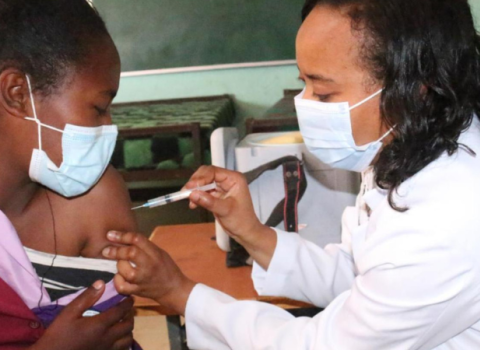AstraZeneca’s outrageously high bid for Cambridge Antibody Technology underscores the heat rising in the biotech market.
To really grasp just how much AstraZeneca is paying for Cambridge Antibody Technology (CAT) Group, you need look no further than this chart.
For most of the past 12 months, you see the share prices of both companies trailing each other around the FTSE market average overall; treading water. Then, at the far right, comes the explosion in CAT’s stock price following the bigger company’s takeover announcement.
Irrational exuberance? And how. But not on the part of the market; it’s just arbitraging against the AstraZeneca bid price of £13.20 a share. The real question is: What on earth are the AstraZeneca executives - led by the newly installed CEO David Brennan - thinking?
The curiosity here is that AstraZeneca is valuing the technology platform, which the market isn’t.
The inability to put a price on the potential of their science has long dogged biotech companies. In the 1990s it meant it was not possible for them to go public in London until the listing rules were changed; once they could go public many ended up with more cash in the bank than their market capitalisation; then, in the five years of restructuring at the start of this decade, raft loads of technology with endless potential went for a song.
No doubting the value
However, the value of antibody companies can no longer be in doubt. Over the past decade monoclonal antibodies have become a great success story, with 17 now on the market, and total sales of over $14 billion in 2005. There is a pipeline of 310 monoclonal antibodies in preclinical development, 44 in Phase I, 61 in Phase II, and 19 in Phase III.
There are lots of things to love about monoclonal antibodies – they have a superior effect to small molecules, there is a rich environment of targets against which they can be aimed, they can be made efficiently (though no one could yet say they are cheap) and there is now a well-trodden regulatory pathway.
Humira, a rheumatoid arthritis treatment discovered by CAT, and developed by its partner Abbott Laboratories, sold $1.4 billion last year. This means that even though the rest of the in house and partnered projects in the CAT portfolio may be some distance from the market, AstraZeneca knows the technology works.
And yes, AstraZeneca badly needs some hot new drugs for its empty pipeline. Since the start of the year it has axed two drugs in development, Galida a diabetes treatment and the anti-coagulant Exanta, while three of its top sellers, the ulcer treatment Nexium, Toprol-XL for hypertension, and Seroquel for schizophrenia are facing legal challenges over patents.
Refreshing perplexity
Despite its need to acquire new compounds, it was unusual, not to mention refreshing to hear AstraZeneca’s chief financial officer Jon Symonds telling analysts on Monday when the deal was announced that “it was perplexing to us” that the CAT share price was so low.
But hang on: a 67 per cent premium over the pre-bid stock price (and a premium of 88 per cent to CAT’s average price of £7.02 per share over the 12 months prior to the announcement)? How many friendly deals in the real world happen like that? How can AstraZeneca justify that to its own shareholders? Why pay a premium like that when AZ was already a strategic investor in CAT, owning 19.2 per cent? (After all, AZ would have had no serious counter-bidder to contend with.)
So why did AstraZeneca pay more? The premium is about putting a value on the potential of the technology, but more than that it is about the Spirit of Partnership.
AstraZeneca and CAT have had a very productive relationship since they began work together in November 2004 when AstraZeneca made its £75 million equity investment. All the targets have been met, or exceeded, and the first fruit will be seen by the end of the year when the first antibody discovered by the collaborators goes into AstraZeneca’s clinical development pipeline.
Stunning progress
This is stunning progress. As John Patterson, Executive Director of Development at AstraZeneca, said on Monday, “The alliance is delivering; the discovery output has met or exceeded all the targets we set.”
The experience of the partnership demonstrated CAT would be a valuable addition to AstraZeneca. But it must also have brought the pharma company face to face with the fact that if two and two are going to be added together to get five, you have got to bring out the best of CAT, rather than consuming it like an asset stripper.
Of course, there is a lot of value tied up in CAT’s phage and ribosome display patents, but there is even more value in the irreplaceable expertise of CAT’s 300-odd employees. As Patterson acknowledged, “Above all else we are acquiring a world-class organisation, with world class people.”
What AstraZeneca is doing is placing such a premium on CAT is calling an end to the cultural hostility that has traditionally pervaded relations between pharma and biotech. Pharma has been used to having the upper hand and playing hard to get when biotechs come proffering their wares. Finally, the penny has dropped that this does not make for productive relationships or for happy employees.
'We want to learn'
In effect, AstraZeneca is saying to CAT’s staff – rather than consuming and exploiting, we want to learn from you. Indeed, the pharmaceutical company is going further than that, offering to pay loyalty bonuses to those stay for a year after the takeover.
So by and large, investors in both companies are cheery. CAT stock is soaring. AZ stock is holding pretty steady – and even creeping up a bit. As merger announcements go, this is a win-win.
There is another lesson here. The AstraZeneca bid is the latest sign of a mounting disequilibrium between slow-growth pharma majors and nimble biotechs. On the one side, you have executive suites desperate to find new potions to peddle: after a decade of spending more on sales and marketing than on research and development, the pharmaceutical titans are now paying the price.
On the other side, you have a pitifully small supply of genuinely great biotech companies that are ripe to buy – just mature enough to be certain they’re a good bet, but young enough not to be outrageously expensive.
A nice trickle
This is the kind of logic that’s driving biotech deals around the world right now. It’s permitting the first rash – well, call it a nice trickle – of biotech IPOs in Europe since the late 1990s. It’s pulling in its wake a chain of smaller investments – in biotech start-ups and university spin-outs. The bandwagon is gathering speed. (Interest declared: It’s also, by the way, what motivates Science|Business to plan, on 13 June in Stockholm, a Roundtable discussion about the state of the biotech market, in collaboration with Karolinska Institute, Stockholm BioRegion and German VC fund TVM. When news happens, people want to compare notes.)
To sum up: now pharmaceutical companies have grasped the point that biotechnology is the future of their industry they will pay a premium to get their hands on some of it. This is not just because of the value of biopharmaceutical sales, but also because biotechnology now feeds directly into small molecule development programmes.





 A unique international forum for public research organisations and companies to connect their external engagement with strategic interests around their R&D system.
A unique international forum for public research organisations and companies to connect their external engagement with strategic interests around their R&D system.